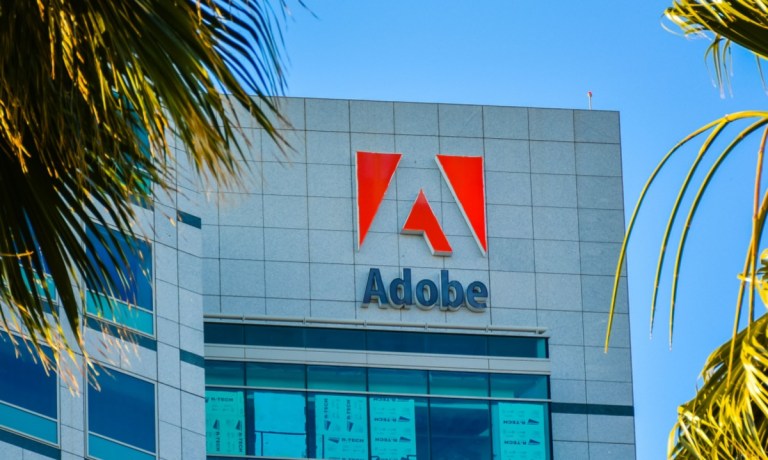
Adobe’s Firefly Services are at the forefront of AI-driven innovation, now reaching a significant milestone of 12 billion generations. This achievement highlights Adobe’s strategic focus on enhancing its Creative Cloud and Document Cloud platforms, showcasing how its AI technologies are reshaping content creation and document workflows with efficiency and creativity.
During the company’s third-quarter earnings conference call with analysts and investors Thursday (Sept. 12), Adobe president and CEO Shantanu Narayen said Adobe’s customer-centric approach to AI is “highly differentiated across data, models and interfaces. We train our Firefly models on data that allows us to offer customers a solution designed to be commercially safe.”
Adobe has released Firefly models for imaging, vector and design, and previewed a new Firefly Video model.
“Our greatest differentiation comes at the interface layer with our ability to rapidly integrate AI across our industry-leading product portfolio, making it easy for customers of all sizes to adopt and realize value from AI,” Narayen explained. “We’re delighted to see customer excitement and adoption for our AI solutions continue to grow and we have now surpassed 12 billion Firefly-powered generations across Adobe tools.”
Third-quarter revenue rose 11% to $5.41 billion while digital experience subscription revenue grew 12% to $1.23 billion.
“We’re bringing together content creation and production, workflow and collaboration and campaign activation and insights across Creative Cloud, Express and Experience Cloud,” Narayen said. “New offerings including Adobe GenStudio and Firefly Services empower companies to address personalized content creation at scale with agility and enable them to address their content supply chain challenges.”
Firefly-powered features in Adobe Photoshop, Illustrator, Lightroom and Premiere Pro help amplify users’ creative potential and increase productivity. Adobe Express offers a streamlined, versatile platform for effortless content creation, enabling millions to unlock their creative capabilities. Acrobat’s AI Assistant enhances the value extracted from PDF documents, while Adobe Experience Platform’s AI Assistant helps brands automate workflows and cultivate new audiences and customer journeys. Additionally, Adobe GenStudio merges content and data, combining rapid creative expression with enterprise-level personalization to meet scale needs effectively.
David Wadhwani, chief business officer, digital media at Adobe, said during the earnings call that, for decades, PDF has been the “de facto standard for storing unstructured data, resulting in the creation and sharing of trillions of PDFs. The introduction of AI Assistant across Adobe Acrobat and Reader has transformed the way people interact with and extract value from these documents.”
In the third quarter, Wadhwani said Adobe released significant advancements, including the ability to have conversations across multiple documents and support for different document formats, saving users valuable time and providing important insights.
“We’re thrilled to see this value translate into AI Assistant usage, with over 70% quarter-over-quarter growth in AI interactions,” he noted.
In addition to consumption, Wadhwani added: “We’re focused on leveraging generative AI to expand content creation in Adobe Acrobat. We’ve integrated Adobe Firefly image generation into our Edit PDF workflows. We’ve optimized AI Assistant in Acrobat to generate content fit for presentations, emails and other forms of communication. And we’re laying the groundwork for richer content creation, including the generation of Adobe Express projects. The application of this technology across verticals and industries is virtually limitless.”
Tata Consultancy Services recently used Adobe Premiere Pro to transcribe hours of conference videos and then used AI Assistant in Acrobat to create digestible event summaries in minutes, Wadhwani noted.
“This allowed them to distribute newsletters on session content to attendees in real time,” he said. “We’re excited to leverage generative AI to add value to content creation and consumption in Acrobat and Reader in the months ahead. Given the early adoption of AI Assistant, we intend to actively promote subscription plans that include generative AI capabilities over legacy perpetual plans that do not.”
When consumers use Adobe’s generative features, “they retain better,” Wadhwani said. “We’re also seeing that when people come to Adobe to try our Creative Cloud applications or Express application, they’re able to convert better. There are all these ancillary implied benefits that we’re getting. But in terms of direct monetization, what we’ve said in the past is that the current model is around generative credits. We do see with every subsequent capability we integrate into the tool, total credits consumed going up. Now, what we are trying to do as we go forward, we haven’t started instituting the caps yet. And part of this is, as we’ve said all along, we wanted to really focus our attention on proliferation and usage across our base.”
Wadhwani said leadership was “watching very closely as the economy of generative credits evolves. And we’re going to look at instituting those caps at some point when we feel the time is right and/or we’re also looking at other alternative models.”
Wadhwani also added that company officials “see the opportunity to engage very deeply in the monetization. But we want to play it out over time and proliferation continues to be our primary guide.”